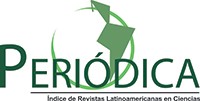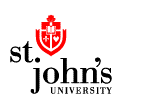EPROPOSAL FOR AN EVENT RECONSTRUCTION ALGORITHM TO STUDY THE EVOLUTION OF CANCEROUS CELLS
DOI:
https://doi.org/10.24039/rtb20222021355Keywords:
cancerous cells evolution, event reconstruction algorithm, 3D image reconstructionAbstract
In this work, a general algorithm is proposed to design the reconstruction of chemical/physical/biological process events as one of the most complicated today: the evolution of cancer cells. Studying the evolution of the boundary curves it is possible to make a three-dimensional (3D) integration, in addition the 3D figure obtained can be explained through a mathematical model to estimate its geometric evolution after physical/chemical reactions. In this work, there are analyzed images of each stage of the process based on the evolution of cancer cells. Each image was processed in order to obtain a mathematical equation as a reference to understand the geometry of the 3D structure based on its 2D image for each stage. On the other side, with this information and the processing of each stage image, a mathematical equation was achieved to describe the geometry of the structure between stages by "Optimal Prediction Analysis" which is so important to gain understanding of the geometry of the structure with the internal process.
Downloads
References
Al-Haddad, A.; Wang, Z.; Xu, R.; Qi, H.; Vellacheri, R.; Ute Kaiser, U. & Lei, Y. 2015. Dimensional dependence of the optical absorption band edge of TiO2 nanotube arrays beyond the quantum effect. The Journal of Physical Chemistry C, 119: 16331-16337.
Calderón, J.; Tafur, J.; Barriga, B. & Lozano, J. 2019. Event reconstruction algorithm proposal to study sensors elaboration based on nanostructures. Proceedings of the 23rd World Multi-Conference on Systemics, Cybernetics and Informatics, 2: 78-83.
Calderón, J.; Tafur, J.; Barriga, B.; Guevara, J.; Lozano, J.; Lengua, J. & Solano, G. 2021. Event reconstruction algorithm for Coronavirus (COVID-19) 3D reconstruction, according to study its reaction through antiviral analysis treatment. The Biologist (Lima), 19: 87-96.
Inan, U. & Marshall, R. 2011 Numerical Electromagnetics, The FDTD method. Cambridge University Press.
Kraeft, S.; Sutherland, R.; Gravelin, L.; Hu, G.; Ferland, L.; Richardson, P.; Elias, A. & Chen, L. 2000. Detection and analysis of cancer cells in blood and bone marrow using a rare event imaging system. Clinical Cancer Research, 6: 434-442.
Lei, Y.; Cai, W. & Wilde, G. 2007. Highly ordered nanostructures with tunable size, shape and properties: A new way to surface nano-patterning using ultra-thin alumina masks. Progress in Materials Science, 52: 465-539.
Li, C.; Xu, C.; Gui, C. & Fox, M.D. 2010. Distance regularized level set evolution and its application to image segmentation. IEEE transactions on image processing, 19: 3243-3254.
Ljung, L. 1994. Modeling of dynamic systems. Prentice Hall.
Pearson, A. 1995. Aerodynamic parameter estimation via fourier modulating function techniques. NASA Contractor Report 4654. Brown University.
Poinern, G.; Ali, N. & Fawcett, D. 2011. Progress in nano-engineered anodic aluminum oxide membrane development. Materials (Basel), 4: 487-526.
Ribeiro, E. & Shah, M. 2006. Computer Vision for Nanoscale Imaging. Machine Vision and Applications, 17: 147-162.
Sidow, A. & Spies, N. 2015. Concepts in solid tumor evolution. Trends in Genetics, 31: 208-214.
Tume-Farfán, L. F. 2013. Aspectos de las células madre que originan el cáncer como nuevo objetivo de investigación. The Biologist (Lima), 11: 339-351.
Tume-Farfán, L.F. 2014. Las ratas topo y sus mecanismos de resistencia al cáncer y envejecimiento. The Biologist (Lima), 12: 117-132.
Wang, L. 2009. Model Predictive Control System design and implementation using MATLAB. Springer-Verlag London.
Villareño-Do-Domínguez, D.D.; Toledo-Pimentel, B.F.; Araujo-García, M.; Torres-Martínez, B.L.; Rodríguez-León, R.; de Corcho-Martínez, M.P. & Fimia-Duarte, R. 2020. Programa de superación profesional para el equipo básico de salud sobre el programa nacional de detección precoz del cáncer bucal. The Biologist (Lima), 18: 185-205.
Published
How to Cite
Issue
Section
License

This work is licensed under a Creative Commons Attribution-NonCommercial-NoDerivatives 4.0 International License.
Objeto: El AUTOR-CEDENTE transfiere de manera TOTAL Y SIN LIMITACIÓN alguna al CESIONARIO (Revista The Biologist (Lima)) los derechos patrimoniales que le corresponden sobre sus obras por el tiempo que establezca la ley internacional. En virtud de lo anterior, se entiende que el CESIONARIO adquiere el derecho de reproducción en todas sus modalidades, incluso para inclusión audiovisual; el derecho de transformación o adaptación, comunicación pública, traducción, distribución y, en general, cualquier tipo de explotación que de las obras se pueda realizar por cualquier medio conocido o por conocer en el territorio nacional o internacional.
Remuneración: La cesión de los derechos patrimoniales de autor que mediante este contrato se hace será a título gratuito.
Condiciones y legitimidad de los derechos: El AUTOR-CEDENTE garantiza que es propietario integral de los derechos de explotación de la(s) obra(s) y en consecuencia garantiza que puede contratar y transferir los derechos aquí cedidos sin ningún tipo de limitación por no tener ningún tipo de gravamen, limitación o disposición. En todo caso, responderá por cualquier reclamo que en materia de derecho de autor se pueda presentar, exonerando de cualquier responsabilidad al CESIONARIO.
Licencia de acceso abierto: El AUTOR-CEDENTE autoriza que manuscrito publicado en la Revista Científica The Biologist (Lima) (versión Impresa ISSN 1816-0719, versión en línea ISSN 1994-9073) permanece disponible para su consulta pública en el sitio web http://revistas.unfv.edu.pe/index.php/rtb/index y en los diferentes sistemas de indexación y bases de datos en las que la revista tiene visibilidad, bajo la licencia Creative Commons, en la modalidad Reconocimiento-No comercial- Sin Trabajos derivados –aprobada en Perú, y por lo tanto son de acceso abierto. De ahí que los autores dan, sin derecho a retribución económica, a la Escuela Profesional de Biología, Facultad de Ciencias Naturales y Matemática de la Universidad Nacional Federico Villarreal (EPB - FCCNM - UNFV), los derechos de autor para la edición y reproducción a través de diferentes medios de difusión.









































